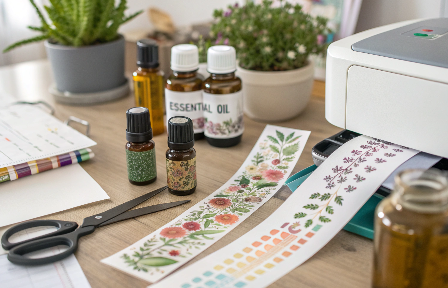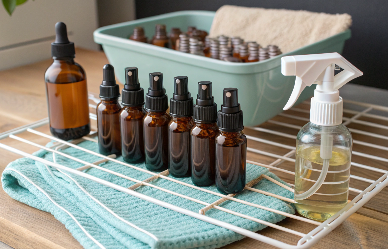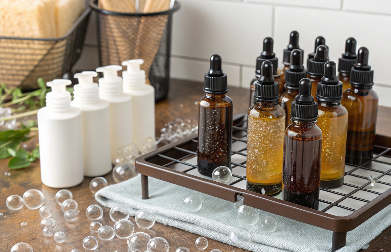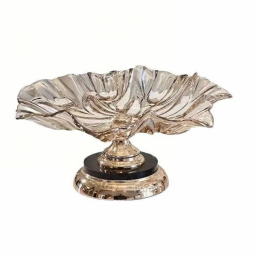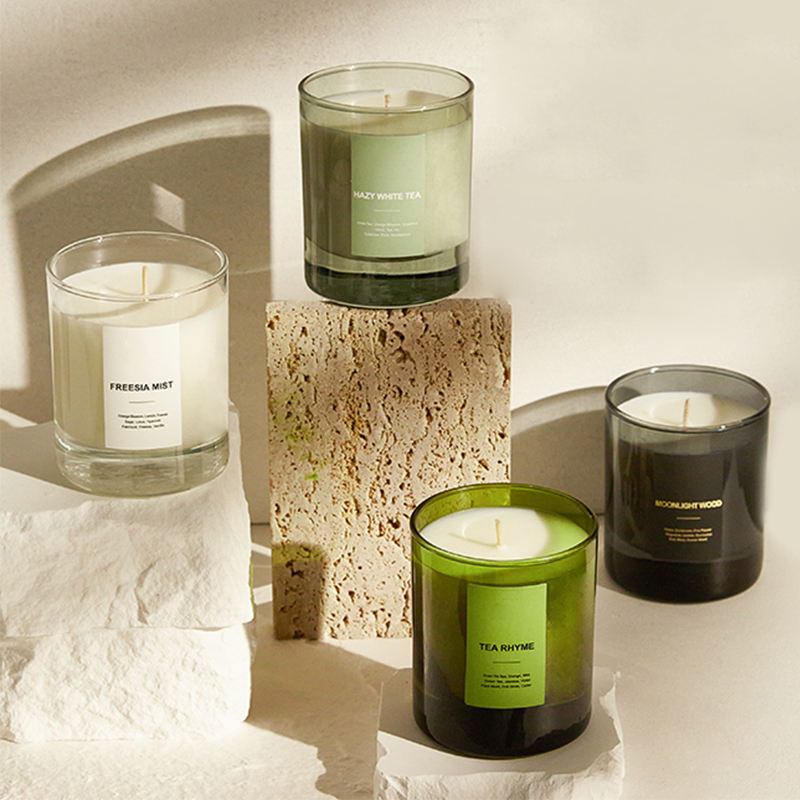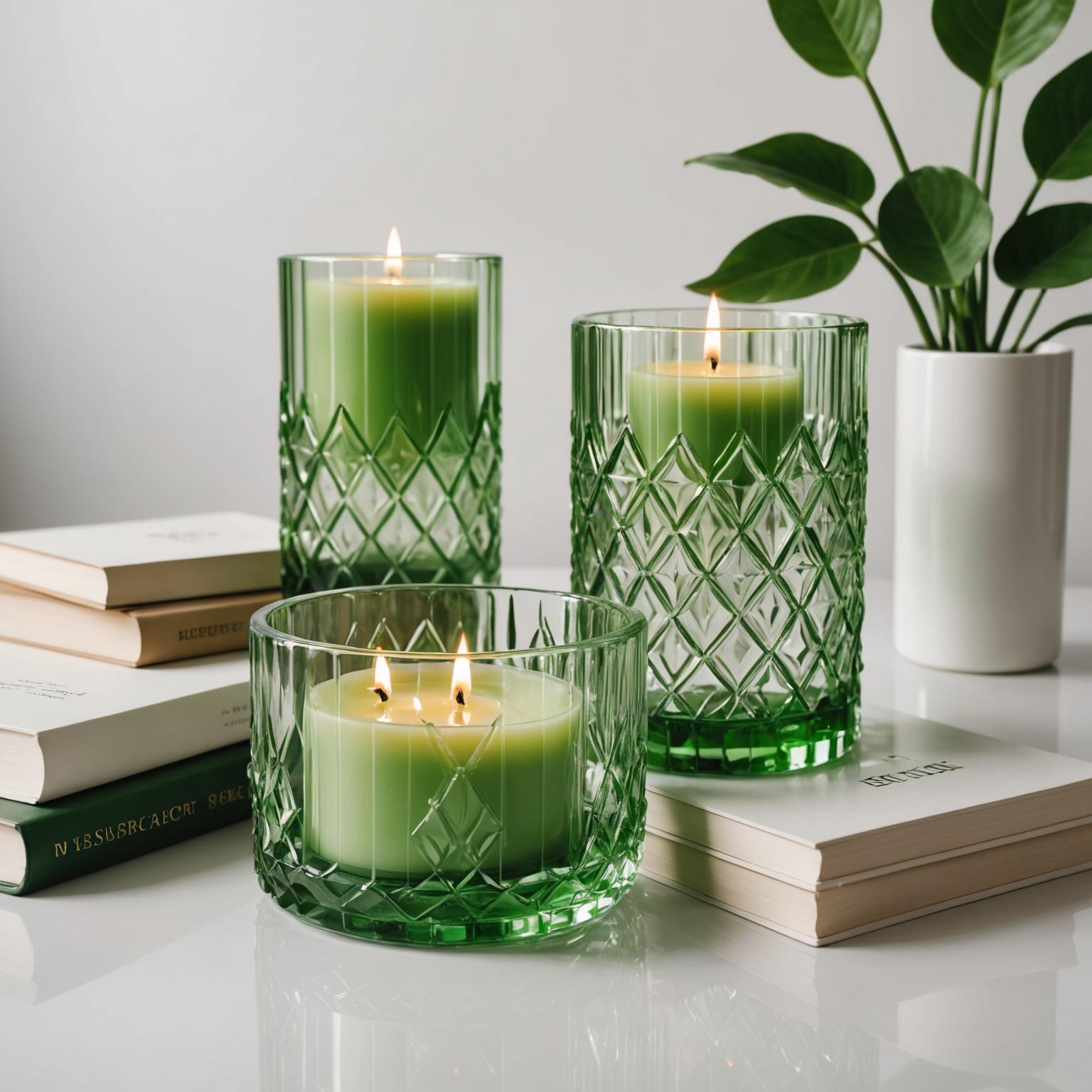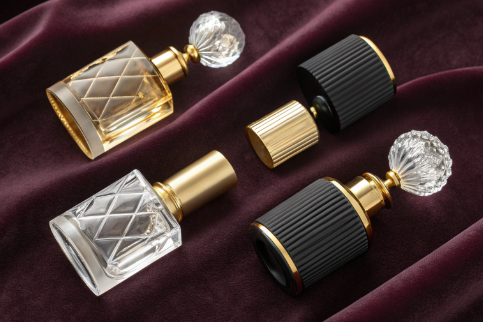Leftover oils and stubborn scents can ruin your next blend—or your brand's credibility.
To clean essential oil glass bottles, rinse with hot water and soap, soak in alcohol or vinegar, and air dry completely before reuse. Use extra care for dropper or spray components.
Whether you're reusing tester bottles, preparing packaging for a new product line, or upcycling returned units, proper cleaning ensures that no residue or aroma interferes with your next formulation. For beauty and wellness brands, hygiene isn't optional—it's part of your brand trust. Here's how to clean, sterilize, and deodorize glass EO bottles like a pro.
How to clean essential oil bottle glass?
Rinsing alone won’t cut it—oils cling, and scents linger.
Clean essential oil bottle glass by soaking in warm soapy water, scrubbing with a bottle brush, then rinsing with vinegar or rubbing alcohol to remove oil residue.
Dive Deeper: Step-by-Step Bottle Cleaning
-
Empty the Bottle
-
Remove any leftover oil and dispose of it properly—never pour it down the drain.
-
-
Soak in Warm, Soapy Water (30 mins)
-
Use mild dish soap; this breaks down surface oil.
-
-
Scrub Inside
-
Use a mini bottle brush for narrow-neck bottles.
-
-
Rinse with Vinegar or Alcohol
-
White vinegar or 70% isopropyl alcohol dissolves residual oils and kills bacteria.
-
-
Final Rinse with Hot Water
-
This removes soap or acid residue.
-
-
Air Dry Upside Down
-
Use a clean rack or paper towel to avoid dust contamination.
-
At PauPack, we recommend this cleaning method for clients testing new blends in our 5ml to 30ml amber glass vials. We also offer pre-sterilized bottles for OEM filling runs—saving you time and ensuring GMP-level hygiene.
How do you sterilize glass bottles for oil?
Clean isn’t sterile—especially when prepping for skincare or medical use.
To sterilize glass bottles for essential oil use, boil them for 10 minutes or bake them in an oven at 300°F (150°C) for 15–20 minutes after cleaning.
Dive Deeper: Sterilization Techniques
Method 1: Boiling
-
Place bottles (without caps) in a pot of boiling water for 10 minutes.
-
Carefully remove with sanitized tongs.
-
Air dry upside down on a clean towel.
Method 2: Oven Sterilization
-
Preheat oven to 300°F / 150°C.
-
Place dry, clean bottles (glass only) on a baking tray.
-
Bake for 15–20 minutes.
-
Let cool completely before touching.
Note: Do not sterilize rubber droppers, plastic spray heads, or caps in boiling water or oven. These components should be cleaned separately with alcohol or replaced altogether.
PauPack offers bottle sets with autoclavable glass and heat-resistant droppers for clients in pharma or clinical aromatherapy. We also provide replacement caps and closures to maintain strict hygiene standards in every refill cycle.
How to clean an essential oil spray bottle?
Sprayers hold more than oil—they hold risk when reused incorrectly.
To clean an essential oil spray bottle, disassemble the pump, rinse all parts in hot soapy water, flush the tube with vinegar or alcohol, then let everything air dry completely.
Dive Deeper: Cleaning Pump & Spray Mechanisms
Spray bottles require more attention due to complex parts:
Cleaning Steps:
-
Disassemble All Parts (cap, tube, pump, bottle)
-
Soak in Soapy Water for 20–30 mins
-
Pump Soapy Water Through Nozzle to clean internal parts
-
Rinse with Alcohol or Vinegar
-
Flush Pump Again to clear any residue
-
Air Dry Thoroughly—ensure no moisture remains
Don't:
-
Submerge entire spray head in boiling water (may warp)
-
Reuse without checking for leftover scent or function
At PauPack, we offer fine mist and trigger sprayers engineered to resist EO corrosion and designed for easy dismantling. For bulk orders, our packaging team can even pre-clean or pre-assemble units in ISO-certified environments.
How to get essential oil smell out of glass bottles?
Lavender may be lovely—but not when you’re bottling peppermint next.
To remove essential oil smells from glass bottles, soak them in baking soda and vinegar, rinse with alcohol, and repeat as needed until odor-free.
Dive Deeper: Deodorizing Tips for Scent Removal
Some oils are notoriously stubborn (patchouli, tea tree, cinnamon). Here’s what works:
1. Baking Soda Soak
-
Fill bottle with warm water + 1 tsp baking soda
-
Let sit overnight
2. Vinegar or Alcohol Rinse
-
Swirl inside thoroughly to neutralize residual oils
3. Sun-Dry
-
Leave bottles open in direct sunlight for 1–2 days
-
UV helps break down lingering scent molecules
Pro tip: For high-resin oils like myrrh or thick citrus, a grain of coarse salt inside can help with gentle abrasion during soaking.
PauPack’s refill customers often ask us how to fully deodorize used bottles for upcycling. That’s why we also offer new dropper inserts and caps in bulk, so your “recycled” doesn’t feel like “secondhand.”
Conclusion
To clean essential oil bottles properly, use soap, alcohol, or vinegar, sterilize safely, and deodorize with patience—because clean packaging is the first sign of a professional product.




